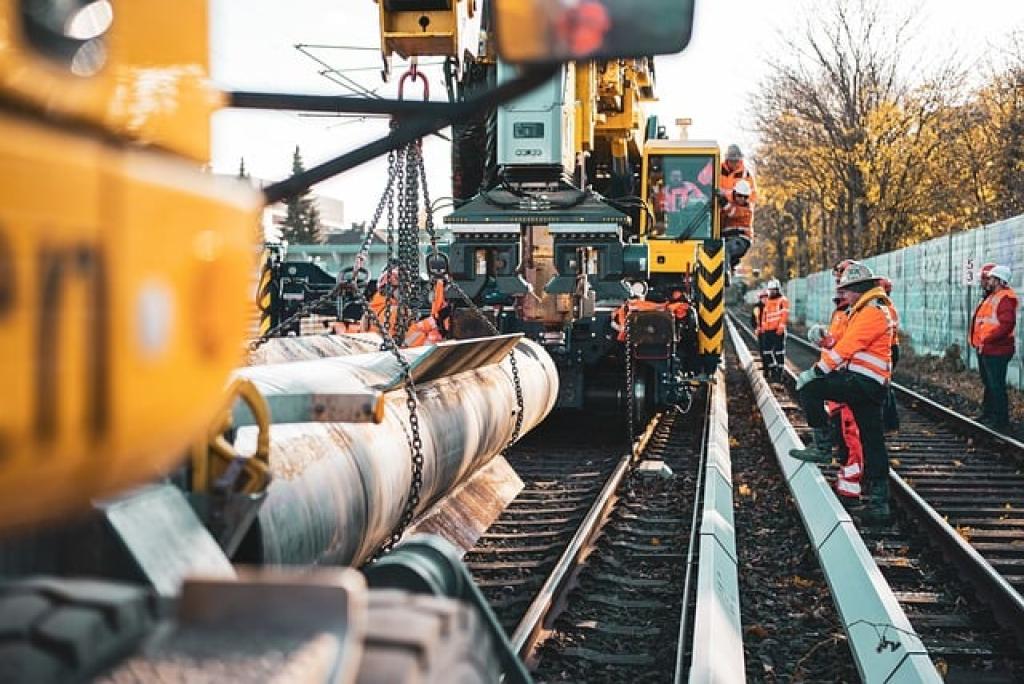Imagine a building material that’s not only super strong but also eco-friendly. Introducing Hempcrete, a rising star in the world of sustainable construction. This remarkable material is made from the woody core of the hemp plant mixed with lime and water.
Hempcrete is making waves for its ability to reduce carbon footprints and improve energy efficiency. It’s like nature’s answer to concrete, but with a green twist. Not only is it lighter, but it also has impressive insulating properties, keeping homes cool in summer and warm in winter.
But why should we care? As the world grapples with climate change, every little bit helps. Hempcrete turns sustainable dreams into reality while helping us rethink how we build our future.
Ready to dive into the many benefits of hempcrete and see how it stacks up against traditional materials? Let’s explore!
What is Hempcrete and How Does It Work?
Hempcrete, also known as hemp lime, is a biocomposite material made from a mix of hemp shivs (the woody core of the hemp plant), lime, and water. Unlike concrete, hempcrete isn’t used for load-bearing structures but as an insulating infill.
The Mix and Its Magic
When blended, the hemp shivs and lime create a lightweight, breathable material. The lime acts as a binder, which hardens over time, giving hempcrete its durable and robust structure. The result is a material that’s both sturdy and flexible, ideal for various construction needs.
Advantages of Breathability
One standout feature of hempcrete is its breathability. It helps regulate humidity by absorbing moisture and releasing it slowly, reducing the risk of mold growth. This makes indoor environments much healthier and more comfortable to live in.
Additionally, hempcrete is fire-resistant and pest-resistant, adding to its durability and longevity. Its natural properties make it an attractive option for those looking to build in an eco-friendly and sustainable way.
Curious about how hempcrete compares to traditional materials? Let’s dive deeper into its unique advantages and why it’s considered a game-changer in sustainable construction.
Advantages of Hempcrete for Sustainable Construction
Hempcrete offers a range of benefits that make it a standout choice for eco-conscious builders and homeowners. Let’s dig into what makes this material so advantageous.
Carbon Sequestration
One of the most impressive features of hempcrete is its ability to sequester carbon. Hemp plants absorb CO2 as they grow, and this carbon is then locked into the hempcrete. This means that buildings made with hempcrete can actually have a negative carbon footprint.
Energy Efficiency
Hempcrete is a fantastic insulator. This means that it helps keep buildings warm in the winter and cool in the summer, reducing the need for excessive heating and cooling systems. Lower energy consumption translates to lower utility bills and a smaller environmental impact.
Long-Lasting and Durable
Hempcrete is exceptionally durable. Its resistance to fire, pests, and mold ensures that structures built with it have a long lifespan. This durability reduces the need for frequent repairs and replacements, which in turn saves resources and reduces waste.
Natural and Non-Toxic
Unlike some conventional building materials that can release harmful chemicals, hempcrete is entirely natural and non-toxic. This results in healthier indoor air quality, which is especially important for people with allergies or respiratory issues.
As you can see, incorporating hempcrete into construction projects isn’t just good for the planet—it’s also beneficial for the people who live and work in these spaces. Ready to make the switch to a more sustainable building material? Hempcrete could be the key to creating a healthier, greener future.
Key Environmental Benefits of Using Hempcrete
Using hempcrete in construction has numerous environmental perks that make it a superstar in the realm of sustainability. Let’s explore some of these incredible benefits.
Reduces Carbon Footprint
Hempcrete not only stores carbon in the plant fibers but also reduces the demand for high-energy building materials like concrete. Traditional concrete production emits a significant amount of CO2, so replacing it with hempcrete helps decrease overall greenhouse gas emissions.
Promotes Biodiversity
Hemp cultivation is great for biodiversity. Hemp plants grow quickly and densely, which means they require fewer pesticides and herbicides. This makes the surrounding environment less toxic for other plants and animals, promoting healthier ecosystems.
Conserves Resources
Hempcrete is made with the stalks of the hemp plant, which grow quickly and require minimal water compared to other crops. This efficiency means that using hempcrete helps conserve water and reduces the strain on agricultural resources.
Reduces Waste
The production of hempcrete generates very little waste. Hemp plants are used almost entirely, from seeds to stalks, meaning there’s minimal leftover material to deal with. Furthermore, at the end of its life cycle, hempcrete can be safely broken down and returned to the earth without causing harm.
Enhances Soil Health
Hemp plants improve the quality of the soil they’re grown in. Their deep roots help prevent soil erosion and can even remove toxins from the soil, leaving it healthier for future crops. This contributes to more sustainable agricultural practices.
As you can see, hempcrete offers more than just structural benefits—it actively contributes to a healthier planet. By choosing hempcrete, you’re not only building a strong, durable structure but also investing in the environment. Ready to take the leap into eco-friendly construction? Hempcrete is a compelling option to consider.
Comparing Hempcrete to Traditional Building Materials
When it comes to choosing between hempcrete and traditional building materials, several key differences stand out. Let’s dive into how hempcrete stacks up against the usual suspects like concrete and brick.
First off, hempcrete excels in insulation. Its natural fibers regulate temperature and humidity, making homes more energy-efficient and comfortable. In contrast, concrete and brick require additional insulation to achieve similar performance, leading to higher costs and complexity.
Next, consider the weight. Hempcrete is much lighter than concrete. This reduces the need for heavy-duty foundations, which can lower overall construction costs and simplify the building process. Additionally, its lightweight characteristic makes handling and installation easier on-site.
Durability is another area where Hempcrete shines. Although it might not be as strong as traditional concrete, Hempcrete is more resistant to cracking and offers excellent longevity. It also has natural pest-resistant properties, unlike wood, which requires chemical treatments.
Cost often plays a significant role in material choice. While the initial expense for hempcrete can be higher due to less mainstream adoption, the long-term savings on energy bills and reduced maintenance costs can be substantial.
Finally, environmental impact is a major consideration. As mentioned earlier, hempcrete offers significant eco-friendly benefits, from carbon absorption to resource conservation. Traditional building materials like concrete and brick have a much larger environmental footprint, contributing to higher CO2 emissions and greater resource depletion.

Case Studies and Success Stories of Hempcrete Projects
One incredible example of a successful hempcrete project is the Limes House in the UK. This home was constructed using hempcrete and has garnered praise for its remarkable energy efficiency. The residents reported a substantial reduction in their heating bills, and the house maintains a comfortable temperature year-round, no matter the season.
A Community Project
Another inspiring story comes from France, where a community center was built entirely with hempcrete. The building not only serves as a hub for local activities but also stands as a testament to sustainable architecture. The structure is celebrated for its minimal environmental footprint and has become a model for future community projects in the area.
In the United States, the construction of the Highland Hemp House in Bellingham, Washington, showcases the versatility of hempcrete. This retrofit project transformed an existing structure into an energy-efficient, cozy home. The owners emphasized the reduced energy costs and the enhanced indoor air quality, attributing these benefits to hempcrete’s natural properties.
Commercial Success
On the commercial front, the construction of Huddersfield University’s Sustainable Energy Building in the UK highlights the industrial applicability of hempcrete. This project demonstrates that hempcrete isn’t just for homes; it can be used for larger-scale buildings as well. The university now leverages this structure to educate students about sustainable building practices.
These case studies and success stories reveal the potential of hempcrete to revolutionize the construction industry. From residential homes to community centers and commercial buildings, hempcrete is proving to be a versatile, durable, and sustainable building material. Its growing popularity and positive feedback from various projects speak volumes about its benefits and future potential.
The Bottom Line: Embracing a Greener Future with Hempcrete
As we face the growing challenges of climate change and environmental sustainability, incorporating hempcrete into our building practices offers a beacon of hope. This eco-friendly material not only reduces the carbon footprint of construction projects but also enhances the energy efficiency and indoor air quality of buildings.
Transitioning to sustainable building materials like hempcrete is not just a trend; it’s a necessary step toward a greener future. We’ve seen the real-world benefits in various projects, from cozy homes to large community centers and even university buildings. These success stories underscore hempcrete’s versatility and its potential to become a mainstream building option.
Alongside this, hempcrete’s use isn’t limited to new constructions. Retrofit projects show that existing buildings can also benefit from this sustainable material. It’s a win-win situation: enhancing older buildings’ performance while mitigating the environmental impact.
In summary, hempcrete stands out as a promising material that aligns with our urgent need to adopt greener practices. By choosing hempcrete, we not only build better structures but also contribute to a healthier planet. Let’s embrace hempcrete and pave the way for a future where sustainable building practices are the norm, not the exception. With each project, we’re not just constructing buildings; we’re building a legacy of sustainability for future generations.
As always, thank you for reading my article. Please feel free to join the conversation with your thoughts, opinions, or experiences with Hempcrete by leaving a comment below.
Stacie Fortson, GGWHSF





